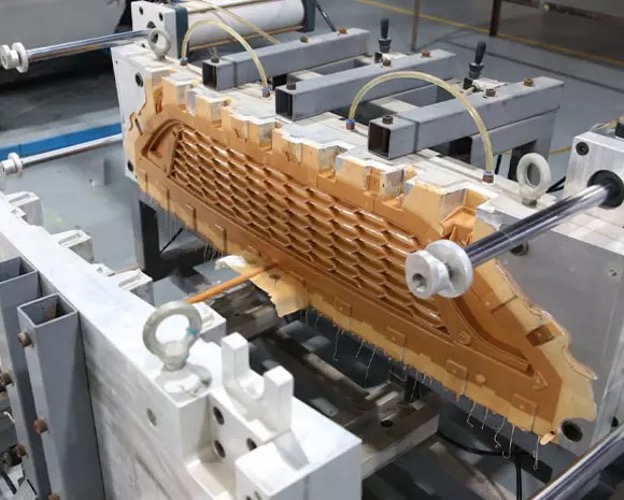Vacuum casting technology is subtly integrated into many consumer electronics and is extremely helpful in creating essential components for modern-day gadgets. This technology is equally beneficial for producing components used in both the functioning and design purposes of your everyday electronics. While there are some obvious uses of vacuum casting, some of its applications will surely surprise you. This manufacturing process allows for detailed and consistent production of different parts with a special focus on the quality and aesthetics of the products. Now, let’s delve into the details of this process.
Defining Vacuum Casting
Vacuum casting is a manufacturing process commonly used in industrial applications where a liquid material is poured into a silicone mold under a vacuum. The molds are designed according to the exact shape of the final product.
Vacuum Casting is highly beneficial for getting exact precision and reducing air bubbles in the manufactured parts, which results in products that closely mimic the properties of the final production pieces. And it is known for its ability to produce complex shapes and fine details with a smooth surface finish. It is widely used for prototyping purposes in industries that require high accuracy and extra repeatability, such as consumer electronics, medical equipment, and automotive.
Introducing the Vacuum Casting Process
The vacuum casting process begins with the completion of a master model, which is usually made using 3D printing or CNC machining. This master model is then encapsulated in silicone to form a mold. Once the silicone mold is made and the master model removed, the vacuum cavity in the fold is filled with liquid material like polyurethane or epoxy resin under vacuum conditions. The presence of a vacuum in the cavity fills every detail of the mold and eliminates any air bubbles, which would otherwise destroy the shape of the product.
This way, you get high-quality and exact parts that are hard to make using any other technique.
Comparing Vacuum Casting with Other Machining Technologies
Except for vacuum casting, there are many manufacturing technologies on the market. What are the differences between them? Now, let’s see:
Pressure Casting VS Vacuum Casting
In pressure casting, you force molten metal into a high-strength steel mold under high pressure. This is an ideal process for high-volume production of precision metal parts with complex geometries, such as automotive and aerospace components. It offers excellent surface finishes and tight tolerances but requires rigid molds and high-pressure equipment.
However, this is not the case with vacuum casting, which utilizes a vacuum chamber to draw liquid resin or metal into a flexible mold. This mold is mainly made of silicon, and the vacuum effectively eliminates air bubbles and minimizes shrinkage. This process is well-suited for low- to medium-volume production, which makes it famous for prototyping and small-batch manufacturing.
Injection Molding VS Vacuum Casting
Injection molding is another widely used manufacturing technique. It involves injecting molten plastic into a metal mold under high pressure. This method is highly efficient for large production as it delivers fast cycle times and low per-unit costs once the mold is made. Injection molding produces parts with high consistency and can handle complex geometries, and the materials are often engineering-grade plastic. However, the initial tooling costs remain high.
When compared with injection molding, vacuum casting may yield slower turnaround times and are best suited for small batches. The silicone molds used in vacuum casting are less expensive and often take polyurethane resins for casting. This makes vacuum casting an excellent choice for prototyping and low-volume production where flexibility and detail are non-negotiable.
Applying Vacuum Casting Technology in the Reality
This table will help you better understand the applications where vacuum casting is most beneficial.
| Criteria | Description | Example Applications |
| Production Volume | Best for low to medium-volume production (typically in the range of 1-50 parts) | Limited Edition Products, Custom Components Sample |
| Material Versatility | Capable of using various materials, including flexible and rigid resins | Custom Plastic Parts, Flexible Components, Impact-Resistant Parts |
| Detail and Complexity | Ideal for parts with high complexity and intricate details, including undercuts and fine surface textures | Detailed electronic housings, complex medical device components, scale models |
| Surface Finish Quality | Produces parts with high-quality, smooth surface finishes suitable for end-use applications. | Consumer electronics casings, cosmetic components, display models |
| Tooling Cost | Lower initial tooling costs compared to metal molds used in other processes like injection molding. | Short-run production, multiple design iterations, early-stage prototypes |
| Design Flexibility | Easily to operate modifications and iterations in the design process. | Custom prototypes, parts for niche markets, experimental designs |
Recommending KAIAO’s Vacuum Casting Services
We, KAIAO, are an experienced vacuum casting service provider in the industry. Here is why you should choose us:
- Exceptional Quality and Speed:We combine extensive experience with advanced technology to provide top-tier vacuum casting services. Typically, you will receive vacuum casting production around 7-14 days.
- Comprehensive Finishing Services:Apart from casting, KAIAO offers a range of finishing services like matte, frosted, semi-gloss, and high-gloss finishes to enhance your product’s appearance and functionality.
- Material Verification and Testing:To ensure the highest quality right from the start, KAIAO uses premium resins from leading international brands. This commitment to quality guarantees that your parts meet the necessary durability and performance standards.
- Material Options:KAIAO works with a wide range of materials, including PU, imported PU, transparent PU, soft PU, ABS, PP, and PC. They can also create transparent, strengthened, colored, and rubber prototypes, providing great versatility for different project needs.
Wrapping-Up
We, KAIAO, are a leading provider of rapid prototyping services, products, and solutions. We started our journey in the manufacturing industry in 1995. For now, we have maintained their excellence, having experienced engineers in our vacuum casting factory in order to always deliver the best production for you. Besides, KAIAO leverages a state-of-the-art 3000-square-meter production plant equipped with advanced R&D technologies. This extensive capability allows us to meet diverse client needs with precision and efficiency. If you are interested, please visit our official to learn more, and contact us if you have any questions.



